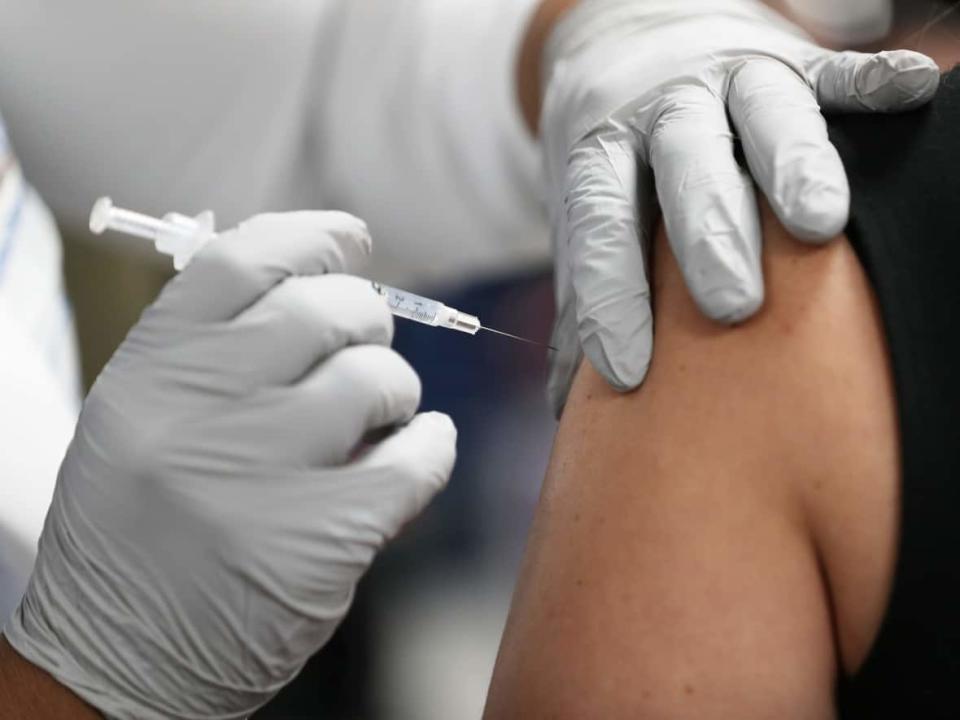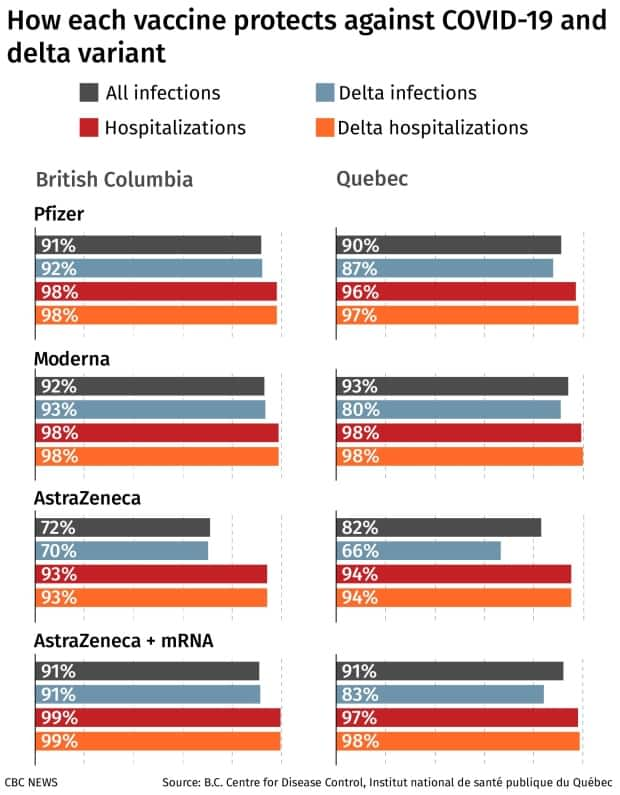Ontario needs to better track vaccines tied to breakthrough cases, expert says

Ontario is being urged to track the type of vaccines tied to breakthrough cases of COVID-19 to determine if the province's vaccine strategy was the most effective for protection against the virus.
Dr. Gerald Evans, an infectious disease specialist at the Kingston Health Sciences Centre, says it's vital to know which vaccine was given to someone who later contracted COVID-19.
"It's important for us to collect that because we have to say, was our strategy good? How does it compare to other countries?" Evans said.
Ontario keeps tabs on the vaccination status for all COVID cases but it does not track which vaccine type was received by someone who tests positive.
An Ontario government spokesperson said the province's epidemiological team is considering that type of data breakdown, but there is no timeline for that decision.
How does Ontario's strategy compare?
Canada allowed for residents to mix their doses, and extended the time between doses compared to what was tested in clinical trials.
Ontario offered one of three brands in Pfizer-BioNTech, Moderna or AstraZeneca-Oxford, and many people received a combination.
"We're actually getting more bang for the buck from the same vaccines because of the mixing or the waiting for the second shot," said Dr. Earl Brown, Emeritus Professor of Virology at the University of Ottawa.
Immunologists have long known waiting eight to 12 weeks between vaccine doses for other diseases boosts immune response, Brown said. Canada chose to bring the COVID-19 vaccines in line with this practice largely due to logistics.
Tracking that interval between doses for breakthrough cases will also help with scheduling third doses for the general population, Evans said.
He said immunity will drop off over time and if it's happening faster in one vaccine over another, it might be time for booster shots for some.

No vaccine is 100% effective
Breakthrough cases are not vaccine failures, Evans added, and those cases become more common as the number of vaccinated people rises. None of the vaccines are 100 per cent effective at preventing an infection, though they are very good at preventing hospitalization, severe illness and death.
He did say, as more data becomes available, certain vaccines and combinations of vaccines have shown to provide stronger protection.
Evans said German and British data indicates "you won the lottery" if you got a first dose of AstraZeneca, which is a viral vector vaccine, followed by an mRNA vaccine — either Pfizer or Moderna.
"If you got double Pfizer, double Moderna, you're laughing. If you got AstraZeneca and Pfizer, or AstraZeneca and Moderna, you're really laughing," Evans said.
Evans suggests age could be the main factor that affects which vaccine is right for someone going forward. Children have great vaccine immunogenicity — the ability to stimulate an immune response — so when Pfizer becomes available for those age five to 11, the dose will only be 10 micrograms.

He suggests Pfizer's 30 micrograms might be all teens and young adults need. Those 80 and older likely need a larger dose because they have less of an immune response.
"If I'm in my 30s, I could be happy with Moderna. About 35 and upwards, Moderna might be the real answer, but Pfizer seems to work just as well," he said.
Data has shown double AstraZeneca isn't quite keeping up, according to Brown.
"AstraZeneca is not looking as good as the mRNA vaccines for blocking infection, but it's still doing pretty well keeping people out of the hospital. But you're starting to see some difference there," he said.

